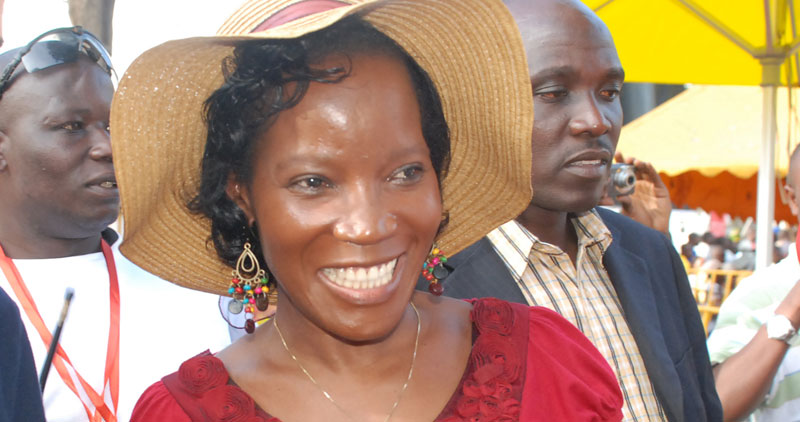Columnists
Implications of Musisi’s resignation
Economic cost of KCCA conflict
Two years ago, I wote in these pages some of the contents of a paper I presented at a conference in Kampala under the theme: “Building Bridges and Partnerships for Peace in KCCA”. The conference was organised by two civil society organisations, the ACODE (Advocates Coalition for Development and Environment) and the National NGO Forum.
I presented about the economic costs of the conflict in Kampala Capital City Authority (KCCA). Now that Musisi, the KCCA Executive Director, has tendered in her resignation, let us take a second look at what the paper found and proposed. May be its content might help stakeholders understand some of the issues the outgoing ED does not raise in her long resignation letter.
It might also help leaders such as the Lord Mayor, Erias Lukwago, who is already on cloud nine over Jennifer’s resignation, to appreciate that we are all losers when we perpetuate a chaotic political-technical interface in the city. Below is the slightly edited version of the story that appeared in these pages in April 2016.
Since 2011, when the Lord Mayor, Lukwago won the first election under KCCA Act, there has been a civil war primarily between him and Musisi. For a long time, Kampala had exhibited a deep institutional dysfunctionality that rendered the implementation of effective urban planning virtually impossible.
Before the KCCA took over at City Hall, researchers had found what they termed, “a profound institutional crisis hampering the governance of Uganda’s capital city.” In the past 7 years, Musisi’s team has made observable progress in addressing some of the hitherto insoluble “Kampala problems”: garbage, potholes, darkness, poor drainage control, public land grabbing etc.
Before the KCCA took over, garbage was rarely collected outside of the commercial city centre. In some divisions such as Makindye where I grew up, taxi operators had named some of their stages “Kasasiro Stage”. We could give directions to our visitors thus, “Ask the taxi conductor to drop you at Kasasiro…then slop down until you reach overflowing sewer channel.”
The roads were riddled with potholes, there were very few functional traffic lights or street lights, and wetlands were being encroached upon not only by informal settlements but increasingly by industrial and commercial properties, some belonging to the top managers in KCC and central government.
When Jennifer Musisi and her team took the reins, some order was restored. But Ebbe Skovdahl, a former football coach, once said, “Statistics are just like mini-skirts, they give you good ideas but hide the most important thing.”
Address political questions
The technical solutions that Musisi’s KCCA has offered arguably conceal more than they reveal the real symbiotic problems of Kampala. The conflict in Kampala needs deep and careful analysis. It’s a perennial problem rooted in government’s (not KCCA per se) failure to address the enduring political question.
Therefore, we cannot adequately capture this conflict through the narrow prism of cost-benefit analysis, that Musis’s team concentrated on. From an economist’s point of view the conflict looks more an “agency conflict” i.e. managers (Musisi and her team) versus shareholders (the residents of the city whose interests are represented by the Lord Mayor). My opinion is that this may be wrong.
The riots we see in Kampala, although may ostensibly be related to the governance of the city, are rooted partly in the people’s anger at the government’s failure to address the political and institutional crisis in the country .
In 2008, Government of Uganda hired a UK consultant firm called Oxford Policy Management (OPM) to establish why the Poverty Eradication Action Plan (PEAP) had failed, and thus inform the National Development Plan (NDP) implementation process. OPM found that Uganda’s progress was being impeded by what they termed, “a chaotic political-technical interface”. This is the relationship Jennifer seems to allude to in her resignation letter.
But my “bosses” primarily had tasked me to identify and analyse the costs that Kampala and Uganda in general has been paying and might continue to pay if the conflict in KCCA is not solved. To understand these costs we need to understand, first, the role Kampala City plays in Uganda’s economy.
The 2014 census report indicates that the “Greater Kampala” (covering a radius of about 20km from the centre in all directions) boasts 3.5 million (47%) of the 7.4 million total urban population. The UN-Habitat projects that Kampala will become a mega-city of more than 10 million people by 2035. The city has grown at an average rate of 5.6% per year in the last 12 years.
Kampala produces 67% of GDP!
Greater Kampala is the heart and legs of Uganda’s economy. It produces over 65% of Uganda’s GDP. In other words, Kampala contributes the largest share of national GDP in the East African region (Nairobi = 20%; Dar es Salaam = 15%). Yet over 60% of the Kampala residents live in slums, and mind you their average age is 15 years; the second youngest urban population in the world (after Niger).
Secondly, to effectively analyse the KCCA Question, we also need to acquaint ourselves with the performance of Uganda’s economy in recent times. Overall, Uganda’s economy has been performing below potential for the last seven years. The average annual GDP growth rate has been 4.5% (target growth rate is 6%); average annual export/GDP ratio was 15.5% (potential is 25%); while the average inflation rate was 9.9% (target inflation rate is 5%).
Private sector investment growth has been very low in the last decade, having reduced from over 22% in 2006/07 to nearly zero in 2014/15 before making slight recovery in 2017/18. The “official” reasons for this poor performance, cited by government, included global financial crisis and economic slowdown, exchange rate volatility, seasonality in the key food basket areas of the country, and other structural rigidities such as power shortages which led to frequent outages, particularly during FY2011/12.
However, the on-the-ground-realities point at increased political risk, due to politically-inspired violence, protests and uncertainty particularly in Kampala. Uganda has witnessed a continued slide in the Heritage Foundation’s Index of Economic Freedom. On this add the unacceptably high youth unemployment, the rising public debt which has restricted our fiscal space, and high lending rates charged by banks. These realities scared away serious investors and plunged Uganda into a silent but steady economic crisis.
KCCA spending more on “operations”
So what is the contribution of the conflict in KCCA to this economic decline? Using what economists call “simulation and game” analysis, we found, using data from the Global Credit Rating Report for 2015, that during the conflict time (between Musisi and Lukwago) KCCA spent on operations more than it did spend on capital/developmental projects.
For example, in 2011/12, the first year under KCCA, operational expenditures (Opex) were lower than capital expenditures (Capex), that is, respectively Ushs27.5billion and Ushs44.4 billion. This trend continued into FY2012/13 where KCCA spent Ushs63 billion on Opex and only Ushs25 billion on Capex. Then beginning in the FY2013/14 through the FY2014/15, there was a shift in spending towards capital projects.
The above correlations mirror-image the conflict timeline at the KCCA. At the beginning, there was calm at City Hall when the Lord Mayor and Musisi worked (conveniently) well. Unsurprisingly, the priorities then were on capital projects. When the bad blood started in July 2012, we observe a geometric growth in Opex. However, when the Lord Mayor was “impeached” in November 2013, and most of the councillors conscripted by the KCCA, Opex began to decline and Capex grew exponentially. These observations fit perfectly in “game analytics”.
Although the operational costs include prudent expenditures such as salaries and wages, they also capture the expenditures on real operations such as removing vendors from the streets, quelling riots, security etc., expenses that could be avoided had the top leadership been working in harmony and shared the same vision and approach to the city’s challenges.
Moving forward
To build towards peace in Kampala, KCCA policymakers and technocrats need not to pursue efficiency and forget all about equity. Most of the ongoing development in Kampala have been “Utilitarian”. Musisi, like most of the elite and government side held the view that “if Kampala develops, the maximum sum of the utilities of its residents will increase/improve.”
In the end, KCCA inadvertently become more preoccupied with raising the welfare of the better-off residents of Kampala, at the expense of the median resident (the poor 60%, working as vendors, boda-boda riders, hawkers, etc.).
All the Government people and Musisi’s team needed to ask were three key policy questions: (1) What is the central problem of Kampala? Is it inefficiency? Inequality? Or both? (2) How much efficiency are the residents of Kampala willing to give up in order to achieve a certain level of equity? (3) Are there circumstances under which equity-increasing policies can occur without seriously reducing efficiency in Kampala?
My considered view is that KCCA ought to embrace some “Rawlsianism” i.e. mind more about the welfare of the worst-off individual in Kampala. The city and the country will be better off if we improve that individual’s welfare.
Since residents in low-income quintile are worse off than anyone else living or working in Kampala, and yet they are the majority, then anything that increases their welfare will increase the overall welfare in the Kampala.
No amount of increase in the welfare of the better-off residents of Kampala will compensate society for a decrease in the welfare of the worst-off individuals. Thus, KCCA and government should plan and deliver the following: (a) Housing for low- and middle-income earners; (b) Build Jua-Kalis and ICT centres for young potential artisans; (c) Make the plans for vendors’ markets participatory.
Don’t build markets that are not commensurate with the culture of Kampala, simply because you saw them in New York or Sao Paulo. One lesson development economics teaches us is that everywhere is different. This is Kampala!
We also need to invest in peri-urban cottage industries; open up pre-paid water kiosks in all slum areas of Kampala where people can access water easily and cheaply; regulate property owners (particularly owners of shopping arcades) who charge people for all sorts of things: toilet, garbage, electricity, and charging in dollar!
Lastly, let KCCA seriously consider building what are termed “third spaces” in the city – places where people can profitably hang around before or after work such that we can reduce congestion on the roads.
Comments






















